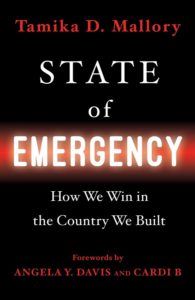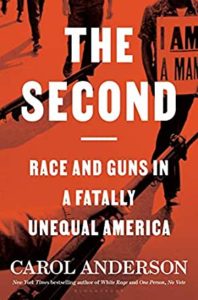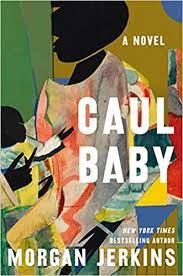Backlist Book Review: Revolting Prostitutes
 This year, I made a New Year’s resolution to read more books about subject matter I don’t know much about. I saw this book on sale during the holidays and bought it. Revolting Prostitutes looks at the current issues facing the sex workers’ rights movement.
This year, I made a New Year’s resolution to read more books about subject matter I don’t know much about. I saw this book on sale during the holidays and bought it. Revolting Prostitutes looks at the current issues facing the sex workers’ rights movement.
I found this book really interesting, accessible, and informative because it was a book about sex workers written by sex workers. Because there is so much stigma around sex work, many of the issues sex workers face get clouded with moral indignation from right-wingers and religious fundamentalists and scapegoating from so-called progressives and feminists. I don’t have a strong opinion about sex workers either way, so I read this book with an open mind. After reading it, everything about this topic made so much sense to me from the sex worker perspective.
One big thing I took away from the book is that instead of moralists always attacking sex workers, why not attack the conditions that force people to pursue this kind of work in the first place? Most people have a limited perspective of who actually does sex work. Most Hollywood portrayals of sex workers are usually privileged, cisgender white women working as high-end escorts who live a lavish life and most likely have other career options. Some people would call them the Happy Hooker or the Pretty Woman stereotype, the latter referring to the blockbuster film starring Julia Roberts.
However, the truth is far from this. The vast majority of sex workers worldwide are usually the most marginalized in society – low-income, immigrants, people of color, LGBT (specifically trans), and people with addiction and mental health problems – and their financial options are extremely limited because of stigma and discrimination. I did appreciate that the two authors, who are both white women, made it clear that they are not representative of most sex workers, and they have the privilege to write such a book when most others can’t, like a Black trans worker. Because of the stigma and discrimination, it is easy for society to look at sex work as moral indignation rather than a workers’ rights issue.
Sex work is work!
The book goes deep into many workplace issues that come up for sex workers, like police brutality, client violence and harassment, health care, housing, and the myriad of unfair labor laws worldwide. For example, it is illegal for two or more sex workers to live together in some countries because that home would be considered a brothel. Many times, sex workers find it more economical to live together. It is also safer for a worker to bring a client home so the other sex-working roommates can look out for each other if a client becomes violent. If a client does turn violent, there is no legal recourse because you can’t call the police. There is also a concern that the visiting client is an undercover cop who will arrest all the residents for brothel-keeping. The worker gets fined, but they can’t afford to pay for it. The police are usually racist, transphobic, homophobic, and xenophobic and threaten harassment, assault, and deportation. Workers will not disclose health conditions and possible assault or rape because of this fear.
The book also discusses how sex work is regulated in different parts of the world and the differences between legalization and decriminalization. The Nordic Model, or the Sex Buyer Law, basically criminalizes the client and apparently protects the worker, but most workers believe this model does more harm than good. The authors argue that when the state makes solicitation illegal, clients and workers will find other ways to get around it. It is the same argument around abortion. Just because it is illegal, that doesn’t mean women will stop getting abortions. It just means women will take more dangerous and illegal means to get them. In regards to solicitation, clients don’t stop seeking out sex workers if it is illegal. The client can take the worker far away from any potential police surveillance to a seedier location to do the transaction (like a forest or on the side of a quiet highway). The client is more likely to commit violence against the worker. Again, the worker has no legal recourse in this situation because they don’t have other financial means and fear deportation or racist cops.
Because of this, the authors argue that there should be clearer laws around full decriminalization for workers, not legalization. Legalization heavily regulates sex work, and it doesn’t prioritize the welfare of workers. In comparison, decriminalization makes sex work the default position and worker right. While it is difficult to come up with one solution to a very complex issue that is viewed differently depending on what region or country you are in, the authors conclude that there needs to be a general movement towards decriminalization, as well as better welfare and safety net provisions, freedom of movement, affordable housing, support for single mothers, better health care access, better labor rights, and access to services, work, and employment alternatives without the threat of deportation and bigotry. Most importantly, a need for rights in general, not a rescue.
“If everybody had the resources they needed, nobody would need to sell sex,” they say.
Sounds fair to me!
I highly recommend this book if you want a clear, easy-to-understand perspective from sex workers who just want respect.



